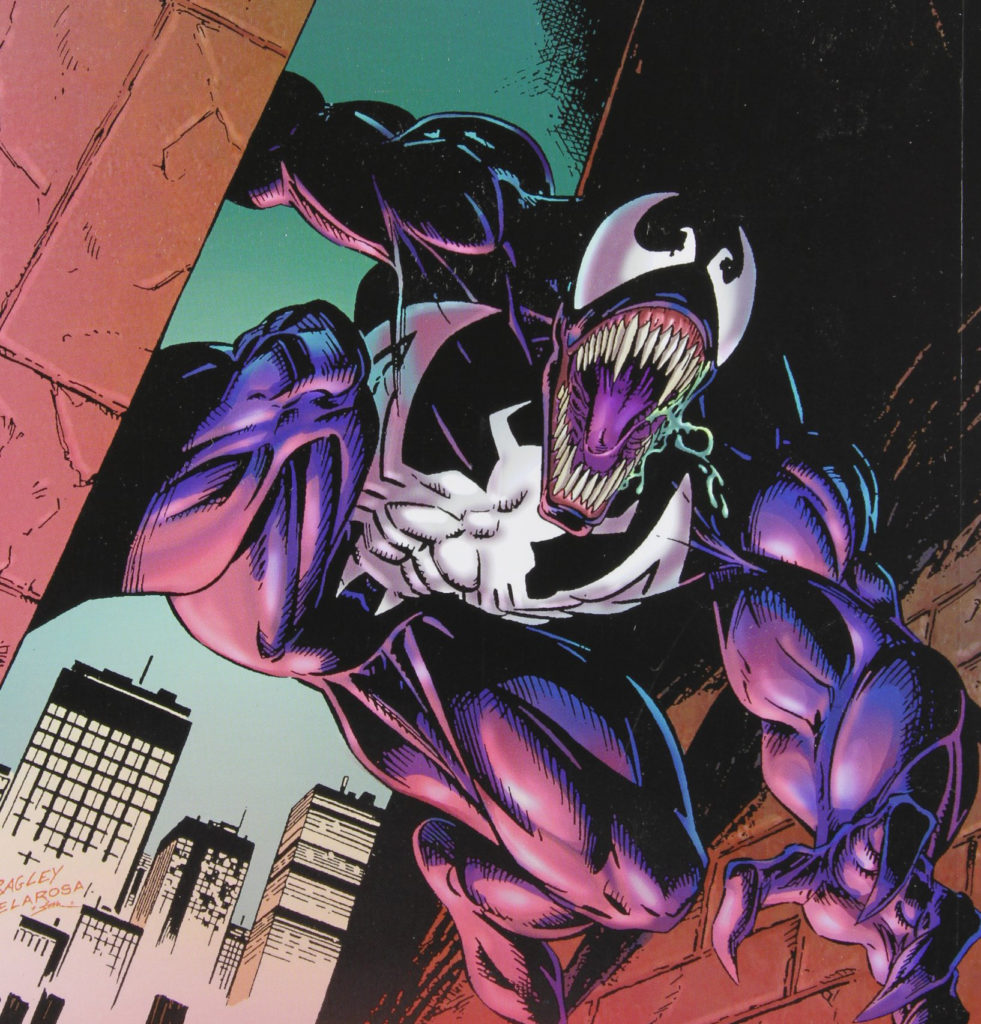I’ll confess up front that I haven’t read very many Venom comics. This year marks the character’s 30th birthday and he has made hundreds of appearances in this time, but I’ve only collected a handful of issues. Even so, these provide glimpses of a character that has been constantly evolving; as different creators have found ways to keep him fresh.
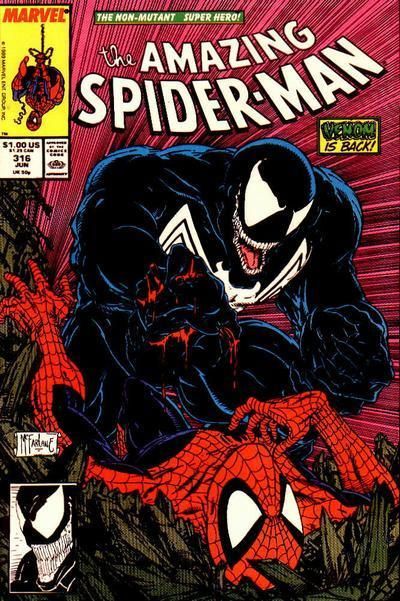
Venom’s first proper appearance was in the much sought after Amazing Spider-man #300 (May 1988), and he would be a recurring villain over the following 75 issues. Issues #316 and #317 cemented his status as Spidey’s arch-enemy in a story titled Venom Strikes Back. It’s worth noting that Spider-man’s top nemesis is now accepted as Green Goblin (Norman Osborn), but at this point in time that character was dead, so there was a vacuum to be filled, and Venom did the job very well. Writer David Michelinie and artist Todd McFarlane created Venom as a sort of steroid-pumped stalker for Peter Parker. The unique selling point was that for other villains (Doc Ock, Vulture, Sandman, etc), eliminating Spider-man was a means to the end of achieving their own criminal plans, but for Venom, killing the hero was the end in itself, and he took great relish in it.
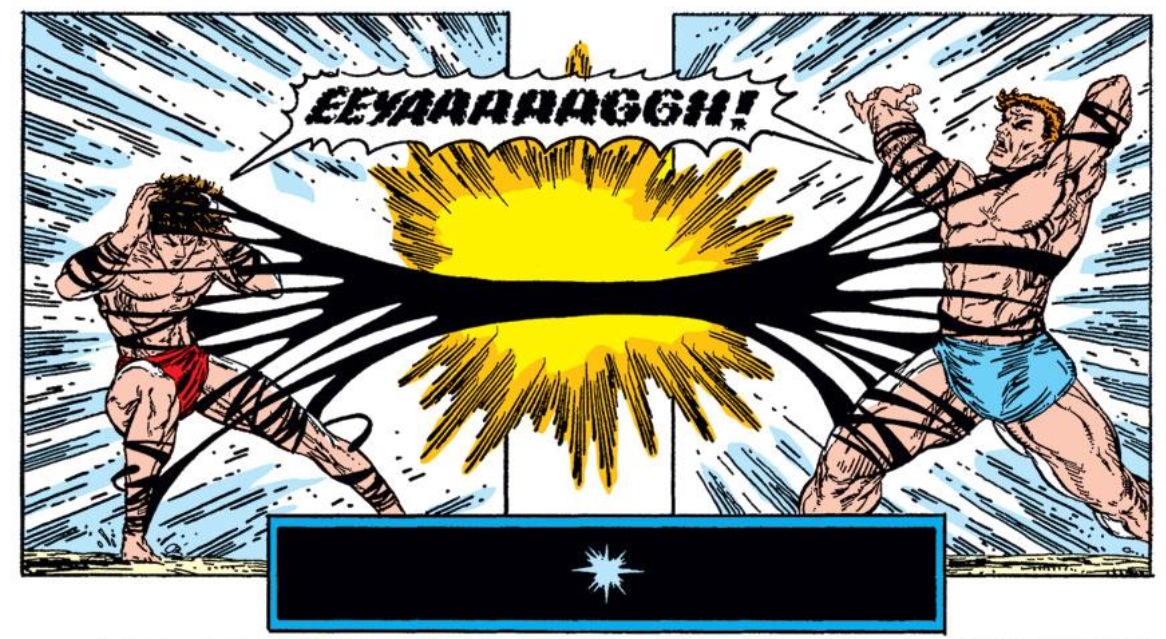
Another core aspect of Venom’s villainy is that he didn’t set-off Parker’s inherent spider-sense, and so the hero is in a constant state of paranoia that an attack may be imminent. Michelinie used these concepts as the foundation of a dark psychological thriller; sort of like Fatal Attraction if it had been played out by a couple of professional wrestlers. And on that subject, there is a bit of a homo-erotic subtext to the whole plot: Eddie Brock spends much of his spare time lifting weights in his underwear; one of his first acts upon breaking out of prison is the brutal assault of one of Spider-man’s ex-girlfriends, Black Cat; and the climax sees Peter himself try to conclude a vicious battle by stripping down to his underwear and shouting to Venom “You want me? Then take me! I’m yours!”
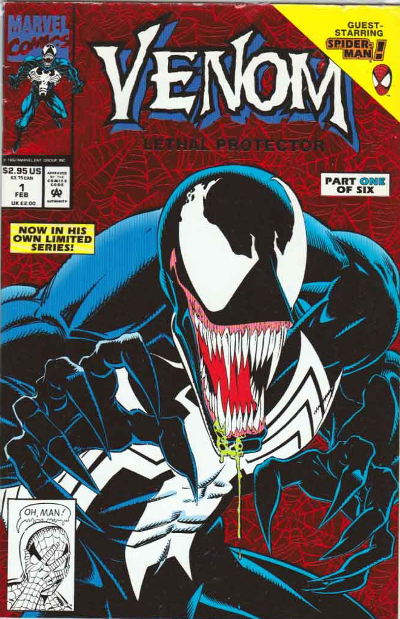
A commonly used characterisation of villains is that they believe they are the hero of the story, and Venom took this to the extreme. Even in early appearances, Brock maintains a twisted morality, most likely as a broken reflection of Spider-man, the man who he both idolises and despises in equal measure. It only took a minor tweak of Venom’s character to shift him from villain to anti-hero, and this was the premise of the 1992 miniseries Lethal Protector. Again written by creator Michelinie, this story saw Eddie move on from his obsession with Spider-man, relocate from the East Coast back to his hometown of San Fransisco, and attempt to define himself as a protector of innocents. Unfortunately, Venom’s efforts are complicated by enemies from his past, as well as a mysterious bio-genetics firm with an interest in exploiting his symbiote abilities, raising the attention of Peter Parker, who realises he must travel across the country to stop his old enemy for good.
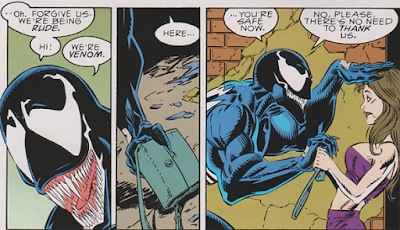
Free from his villain status, Venom now makes darkly comical quips, and even ventures into self-parody; appearing more than ever as a sort of Bizarro Spider-man. Along with a steady stream of opponents to tackle, a conspiracy to solve, and some fantastic art from Spidey veterans Mark Bagley and Ron Lim, the combination makes this a real crowd-pleaser of an arc, even if it isn’t particularly intellectual or profound. It’s no surprise that Lethal Protector was chosen as the starting point for Venom’s own 2018 movie, and I reckon the film-makers did a good a job of cherry-picking the most cinematic aspects while capturing the unashamedly comical tone.
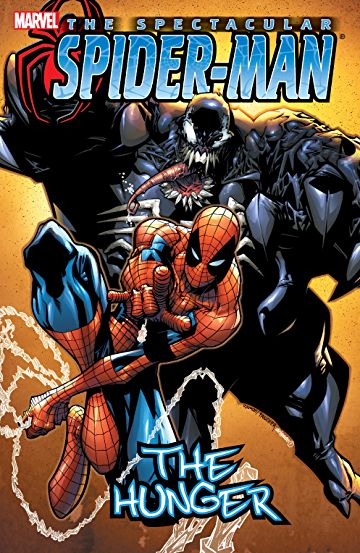
10 years later and Venom would be re-imagined again, this time by writer Paul Jenkins and artist Humberto Ramos, for the 2003 debut of the new series of Spectacular Spider-man, in an arc known as The Hunger. I have a real soft spot for this era of Spider-man stories, as the writers made a marked effort to re-characterise Peter Parker as a bit more socially conscious, and a lot less of a douche. So Peter got a job teaching science at a school in an underprivileged area, took an active role in building relations with the neighbouring community in his new apartment block, and most importantly, became a carer for his old school-friend Flash Thomson, who was in a vegetative state after head injuries resulting from a car crash; in short, Peter had finally decided to grow up.
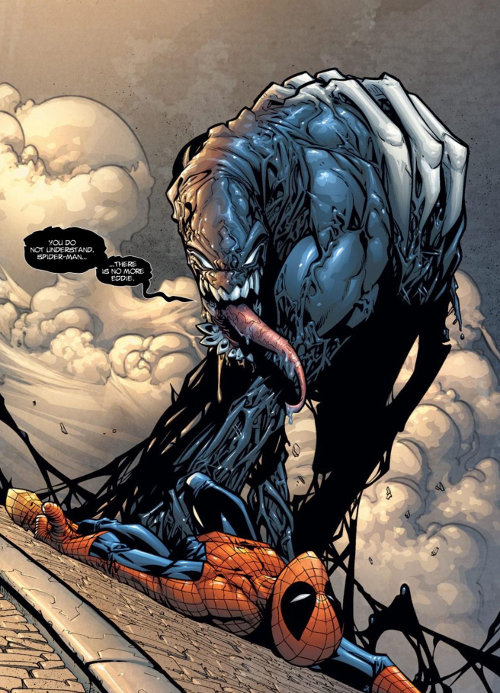
As a counterpoint, when Venom reappears, Eddie’s life is at an all-time low. The twist here is that the Symbiote has become separated from his host and is now stalking innocent members of the public, and leaving them in a comatose state. It’s up to Spider-man and investigating NYPD Detective Neil Garrett to understand what links each of the victims and stop the attacks. Ramos takes this opportunity and reimagines the symbiote as blackly evil fluid; it’s form slipping between memories of the humans it once possessed; reminiscent of the creature from John Carpenter’s classic movie The Thing. One particular image is especially chilling, with Eddie in a confessional, and the symbiote sprawling across the booth and into the church, like a demonic infection. As usual, this is an action packed arc, but with a plot driver that is a bit more low-key and character-based, it feels like the comic itself is trying to grow up a bit too.

